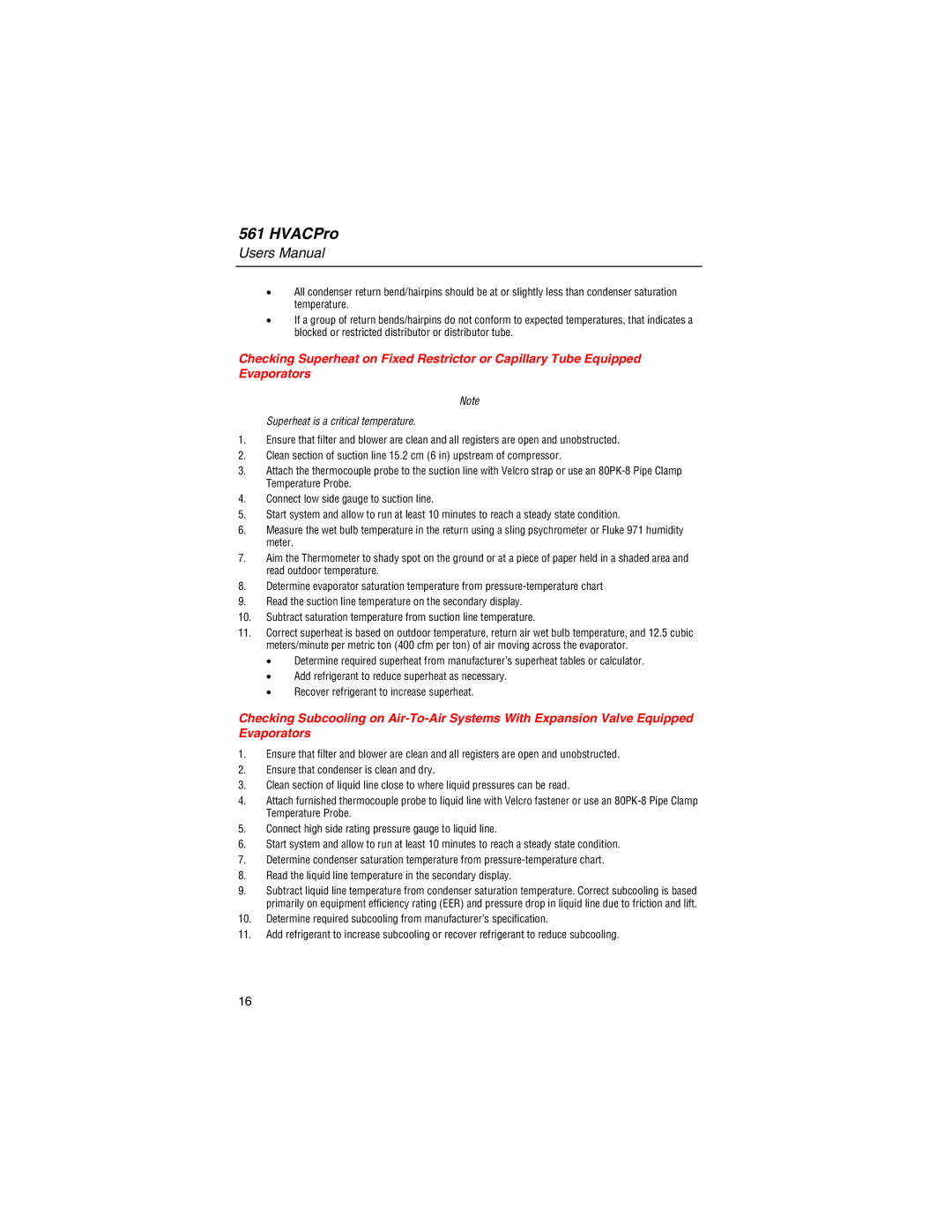561HVACPro
Users Manual
•All condenser return bend/hairpins should be at or slightly less than condenser saturation temperature.
•If a group of return bends/hairpins do not conform to expected temperatures, that indicates a blocked or restricted distributor or distributor tube.
Checking Superheat on Fixed Restrictor or Capillary Tube Equipped Evaporators
Note
Superheat is a critical temperature.
1.Ensure that filter and blower are clean and all registers are open and unobstructed.
2.Clean section of suction line 15.2 cm (6 in) upstream of compressor.
3.Attach the thermocouple probe to the suction line with Velcro strap or use an
4.Connect low side gauge to suction line.
5.Start system and allow to run at least 10 minutes to reach a steady state condition.
6.Measure the wet bulb temperature in the return using a sling psychrometer or Fluke 971 humidity meter.
7.Aim the Thermometer to shady spot on the ground or at a piece of paper held in a shaded area and read outdoor temperature.
8.Determine evaporator saturation temperature from
9.Read the suction line temperature on the secondary display.
10.Subtract saturation temperature from suction line temperature.
11.Correct superheat is based on outdoor temperature, return air wet bulb temperature, and 12.5 cubic meters/minute per metric ton (400 cfm per ton) of air moving across the evaporator.
•Determine required superheat from manufacturer’s superheat tables or calculator.
•Add refrigerant to reduce superheat as necessary.
•Recover refrigerant to increase superheat.
Checking Subcooling on
1.Ensure that filter and blower are clean and all registers are open and unobstructed.
2.Ensure that condenser is clean and dry.
3.Clean section of liquid line close to where liquid pressures can be read.
4.Attach furnished thermocouple probe to liquid line with Velcro fastener or use an
5.Connect high side rating pressure gauge to liquid line.
6.Start system and allow to run at least 10 minutes to reach a steady state condition.
7.Determine condenser saturation temperature from
8.Read the liquid line temperature in the secondary display.
9.Subtract liquid line temperature from condenser saturation temperature. Correct subcooling is based primarily on equipment efficiency rating (EER) and pressure drop in liquid line due to friction and lift.
10.Determine required subcooling from manufacturer’s specification.
11.Add refrigerant to increase subcooling or recover refrigerant to reduce subcooling.
16
